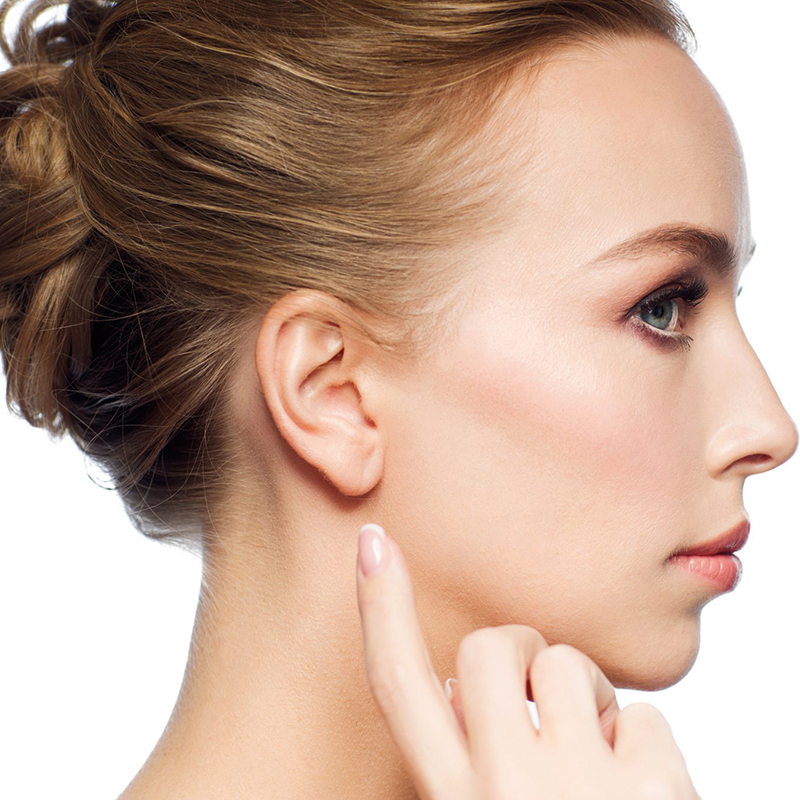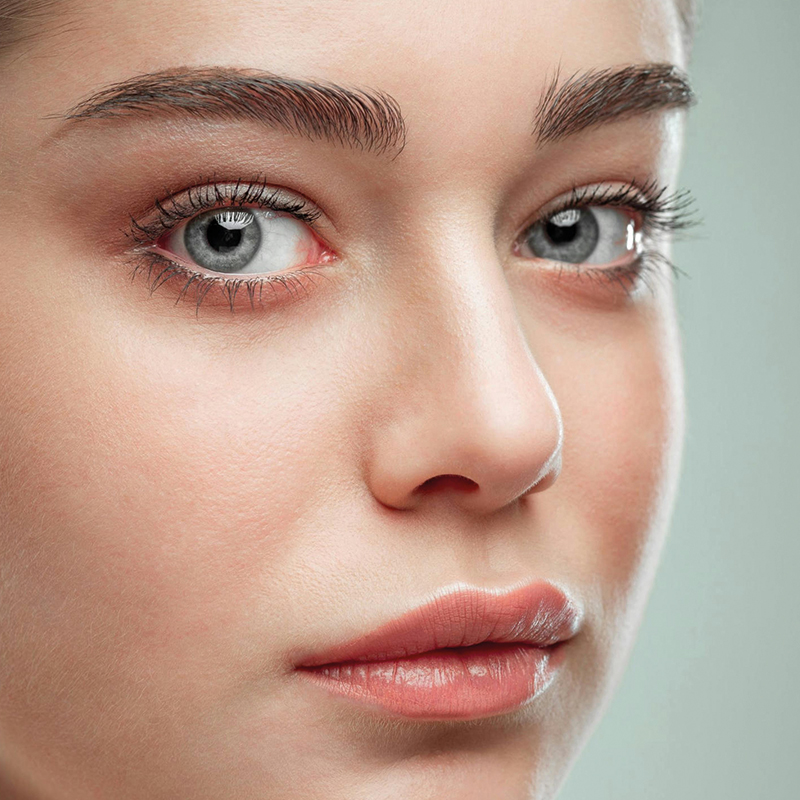What is Rhinoplasty (Nose Aesthetics) Surgery?
Surgical intervention performed due to deformities in the nose area, aesthetic problems and many conditions that make breathing difficult is called rhinoplasty. With the developments in today’s medical world and technological product-supported studies, alternative intervention methods have also been developed. While the visual problems of the patient are eliminated with these operations, it becomes possible to breathe more easily. As the nostrils can be enlarged, the necessary narrowing can be performed. Aesthetic problems in the nose area can also cause negative health consequences. Especially, patients who have difficulty breathing through their nose during sleep can also apply to physicians with complaints of dry mouth and severe halitosis. With nasal aesthetics, all these problems are eliminated in a short time.
Who Can Have Rhinoplasty (Nose Aesthetics)?
Rhinoplasty is applied for those who want their nose to be compatible with the facial features. Candidates who want to have nasal aesthetics are divided into sections. These people are classified as patients with structural nasal disorders, deformities due to nasal injuries, and those with respiratory difficulties. There are various people who want to have nasal aesthetics. Patients can be categorized as those whose nose is disproportionate to their face, those who have an arch in the nasal bone, those with a wide nose, those with a crooked or wide nose, those with an extremely narrow or excessively wide nostril, those with a crooked nose, those who have difficulty in breathing.
The age group is not considered as a criterion for candidates who are eligible for rhinoplasty surgery. Nose aesthetics, which are mostly recommended for people over the age of 20, may cause adaptation problems in patients with advanced age. For those over middle age, it is more difficult to adapt to nasal aesthetics. Therefore, the age group of 18-35 is considered the ideal age group for rhinoplasty operations.

How Is Nose Aesthetic Surgery Performed?
Rhinoplasty surgery can be performed in two different ways as open or closed surgery depending on the condition of the patient and the decision of the surgeon who will perform the operation. It is possible to obtain a healthier image after operations determined as closed and open.
Open Technique
In open surgery, a reverse V-shaped incision is made on the tip of the nose and the operation is started. The biggest advantage of the open technique is that it provides the opportunity to fully intervene in the nose. The nose can be shaped in detail accordingly and control is provided easier. The biggest disadvantage of the open technique is the incision scar. The operation has no disadvantages other than this incision scar that will occur in the lower part of the nose.
Closed Technique
In closed surgery, incisions are made into the nose. For this, closed surgery is preferred much more than open surgery. It is much simpler to monitor inside the nose with the video endoscopic technique in closed surgery, therefore this technique is preferred. Conditions such as cartilage disorders, nostril problems and low nose can be resolved with a short-term operation. One of the biggest advantages of closed surgery is the use of silicone splints that facilitate breathing during surgery.
Recommendations Before Rhinoplasty
Your surgeons will share with you what you need to pay attention to before rhinoplasty surgery. You need to pay extra attention to your health before aesthetic surgery and you should pay more attention to avoid illnesses such as flu. You should stop using aspirin and drugs with similar ingredients one week before the surgery. If you have the possibility of getting flu or cold, or if you had these diseases before surgery, you should give your doctor the necessary information. You should stop smoking and alcohol consumption at least 2 weeks before the operation. Smoking, in particular, negatively affects the healing process and delays the healing process day by day. If the surgery will take place in the summer, you need to pay more attention to protection from sunlight. The day before the operation, you can prepare your face by cleaning your face with anti-bacterial soaps. Additionally, getting a good sleep the day before the surgery will enable you to participate in the surgery in a vigorous way. Share all the questions you have in mind before the surgery with your surgeon and take care to get answers to these questions. In addition to being physically ready, you should also be mentally ready for the operation.
Process Before The Surgery
Physical Examination: In the examination phase, the nose structure is examined first. The technique to be preferred is determined according to whether the nasal skin is thick or thin, and this determination is made by your surgeons. Details such as whether there is a belt in the nose, whether the nose is tilted to the right or left, the placement of the nostrils and the structure of the holes are examined to the finest detail. As a result of these, the technique to be applied is determined and a short information is given about this technique.
Computer Study and Planning: In the study, which will be carried out in digital environment, it is presented to the patients how to intervene in the nose structure and what the nose will look like after this intervention. With this application, which can also be named as virtual surgery, the question marks in the patient’s mind are eliminated and no surprises after the operation are encountered.
Determination of Ideal Sizes: Ideal nose sizes are determined according to the shape of your face and the placement of other organs on your face. Apart from that, it is also possible to determine the ideal size through the following items. The area where the nose begins with the under eye bone is considered as a region. Another area is the distance between both nostrils. Equality of these two areas has an important role in determining the ideal dimensions. The length between the tip of the nose and the point called stomion should be approximately 1.6 times the length of the nose.
Anesthesia Examination: Although general anesthesia is the most preferred anesthesia method in rhinoplasty operations, some physicians may also prefer local anesthesia. It can be used in both methods for rhinoplasty operations and the people who will make the decision are surgeons. Anesthesia examination is of great importance in this context. While local anesthesia becomes much more effective in a short-term operation, general anesthesia should be preferred for long-term operations for the patient to be more comfortable and to step into a comfortable process. Along with the anesthesia examination, blood tests are also performed to ensure the safety of the operation. In some cases, the surgeon may need an ECG or lung film, and in such cases, film shootings as well needs to be completed. The main purpose of this examination is to determine how the patient will react to anesthesia or whether it is suitable for it.
Items And Clothes To Be Taken to The Hospital
When going to the hospital for surgery, it will be in your best interest to bring clothes that are easier to wear and that will make you more comfortable. In addition, clothes that can be easily removed are recommended, especially for women. Do not forget to take off your contact lenses. It is beneficial to consider the possibility of staying in bed and to wear pajamas or shorts style nightwear that will make you comfortable.
After The Rhinoplasty
Oral nutrition should not be performed until your doctor approves after nose surgery. You can be fed orally after your doctor’s approval. There may be bruises on the eye and under eye areas, but these bruises are not a cause for concern. Ice treatment will be applied to prevent this situation a little bit. And in order to prevent this status little bit, ice treatment will be applied and this treatment will be explained to you in more detail by your doctor. In order for the swelling to heal in a much shorter time, a high lying style is recommended and therefore it will be healthy for you to take a lying position with two pillows.
However, the lying position should also be on the back for a certain period of time. Unfortunately, the pressure to be applied to the nose area will affect the healing process negatively and harm the patient if he is lying face down.
Possible Complications and Undesirable Results
Many complications can occur in every surgical operation, but the more professional your surgeon is, the more possible it is to minimize these complications. Post-operative infection may occur, but there is no cause for concern because this problem can be solved in a short time with medication and necessary interventions.
Nosebleeds that may occur after surgery are also among the complications. Problems that may arise from anesthesia are also evaluated under the name of risk. Vascularization and stiffness in the nose area are also among the complications.
How Much Does Nose Aesthetics Cost?
Due to the Ministry of Health and Competition Board Laws, We Cannot Give Information About the Rhinoplasty Costs. For Detailed Information, You Can contact Us Via phone, Whatsapp or e-mail.

 FR
FR ES
ES IT
IT DE
DE RU
RU PT
PT AR
AR RO
RO BG
BG MK
MK IL
IL GR
GR ID
ID SK
SK JP
JP CN
CN PL
PL

















